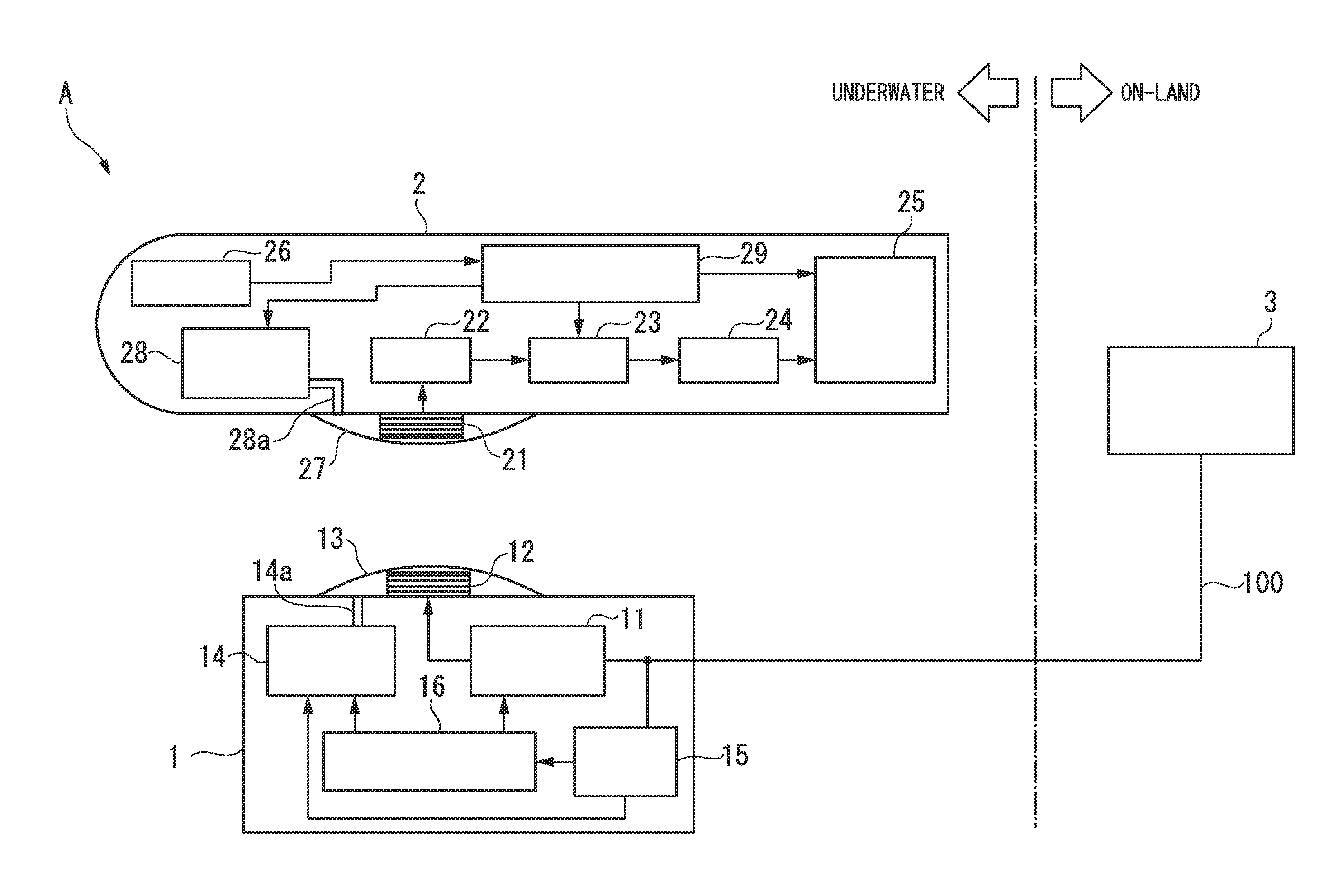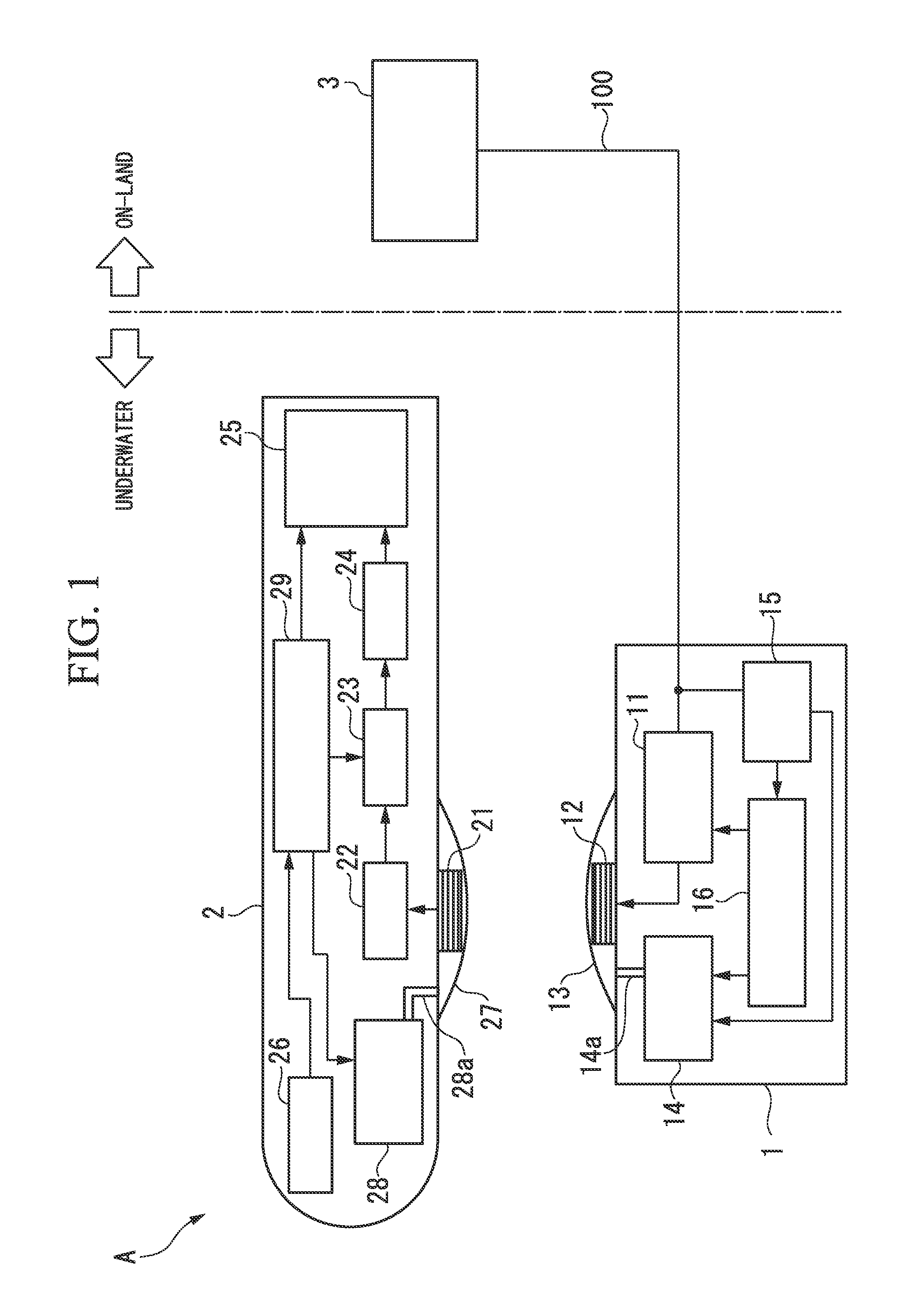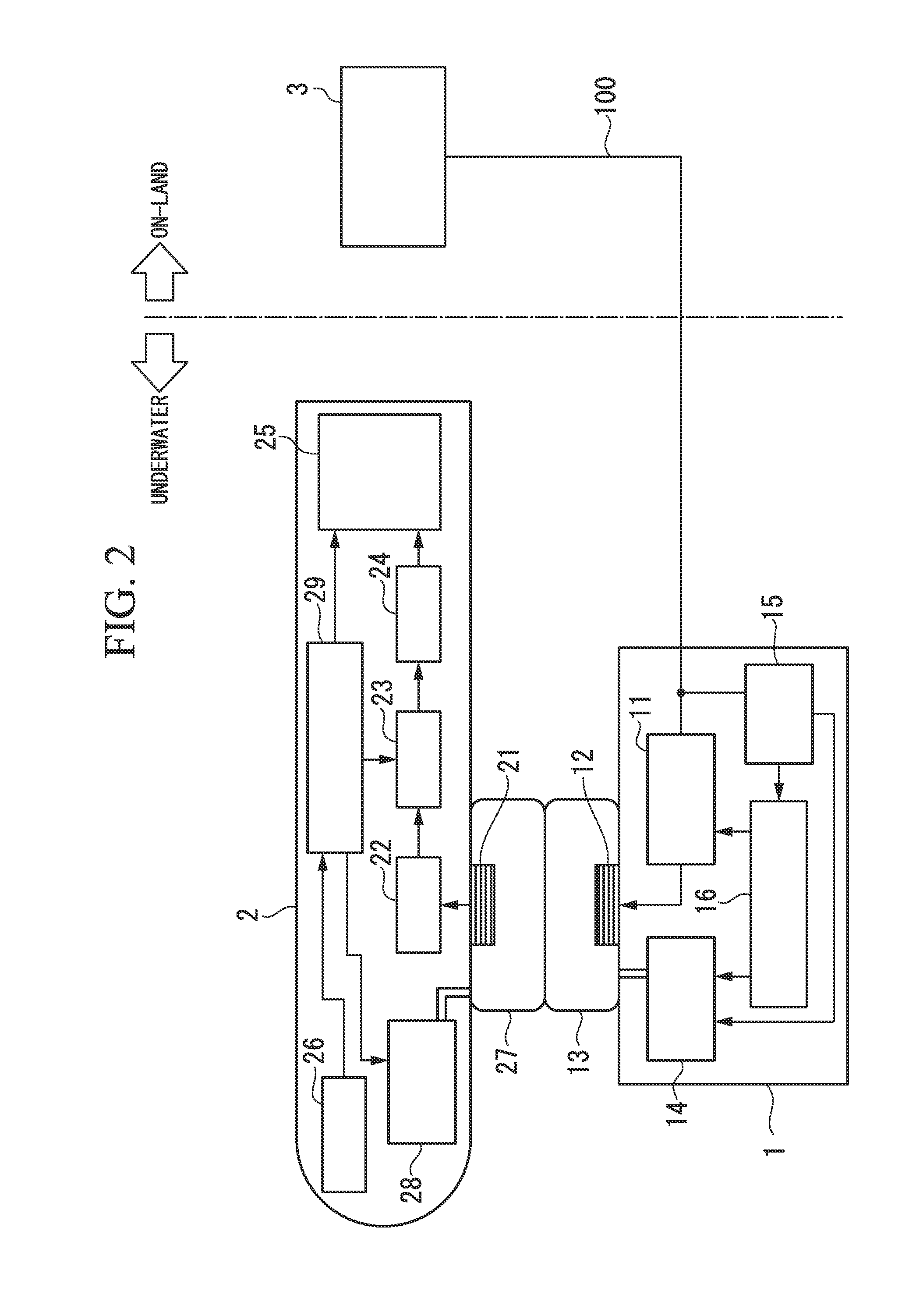Power transmission system
a transmission system and power technology, applied in underwater equipment, special-purpose vessels, instruments, etc., can solve the problems of increasing both the time required and the cost, and the inability to collect data relating to water quality or travel through water, so as to prevent the magnetic field from being disrupted, and achieve high efficiency and long distance
- Summary
- Abstract
- Description
- Claims
- Application Information
AI Technical Summary
Benefits of technology
Problems solved by technology
Method used
Image
Examples
Embodiment Construction
[0021]Hereinafter, an embodiment of the present invention will be described with reference made to the drawings.
[0022]FIG. 1 is a schematic structural view of a power transmission system A according to the present embodiment. As is shown in FIG. 1, the power transmission system A is provided with an underwater base station 1 (i.e., a power-transmitting device) that is installed in a predetermined underwater location, and an autonomous underwater vehicle 2 (i.e., a power-receiving device) that is able to move freely underwater by means of battery power, and with an electrical power system 3 that is installed on land.
[0023]The underwater base station 1 is connected via a power supply cable 100 to the on-land electrical power system 3, and wirelessly transmits (i.e., supplies) AC power (for example, 100 V single-phase power having a frequency of 50 or 60 Hz) that is supplied from the electrical power system 3 to the autonomous underwater vehicle 2 by means of magnetic field resonance. ...
PUM
 Login to View More
Login to View More Abstract
Description
Claims
Application Information
 Login to View More
Login to View More - R&D
- Intellectual Property
- Life Sciences
- Materials
- Tech Scout
- Unparalleled Data Quality
- Higher Quality Content
- 60% Fewer Hallucinations
Browse by: Latest US Patents, China's latest patents, Technical Efficacy Thesaurus, Application Domain, Technology Topic, Popular Technical Reports.
© 2025 PatSnap. All rights reserved.Legal|Privacy policy|Modern Slavery Act Transparency Statement|Sitemap|About US| Contact US: help@patsnap.com



